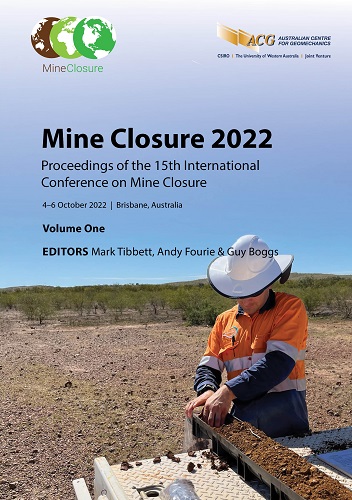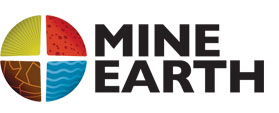The high cost of poor closure estimates

|
Authors: Dunow, T; Kalisch, B |
DOI https://doi.org/10.36487/ACG_repo/2215_88
Cite As:
Dunow, T & Kalisch, B 2022, 'The high cost of poor closure estimates', in AB Fourie, M Tibbett & G Boggs (eds), Mine Closure 2022: Proceedings of the 15th International Conference on Mine Closure, Australian Centre for Geomechanics, Perth, pp. 1193-1200, https://doi.org/10.36487/ACG_repo/2215_88
Abstract:
Planning for closure and its associated costs needs to commence from the early developmental stages of the mine itself and continue through the final relinquishment of the site. Our experience with mine closure estimating over the past several years indicates that most mine closures overrun their initial cost estimates by between 20 and 100 percent. Challenges to accurately estimating mine closure costs include changes to the mine layout over time, extended time to closure execution, execution methodologies, rapidly changing legislation, and managing the multiple disciplines involved in creating a tailored remedial solution, often in remote locations. The concern for miners is that poor closure estimates underestimate capital investment decisions and may even lead to incomplete reporting of financial obligation (liability). Successfully financing and cost estimating closure, decommissioning, and reclamation programmes requires a strategic and collaborative approach that examines the complexities of the mine site itself, the expectations of the surrounding communities, socio-economic considerations, and regulatory requirements. Successful mine closure and related costs can be improved by using three strategies, avoiding, reducing, and correcting negative impacts (Paricheh & Osanloo 2017). The paper will focus on improving global perspectives and best practices in mine decommissioning, closure, and reclamation financing and cost estimating. Our methodology will incorporate our experiences working on global mine closure programmes for major clients, which has enabled us to amass a significant database of cost and schedule information. Additionally, our methodology will incorporate our findings from a collaborative survey, research, and interviews where we explored what it takes to deliver successful outcomes in mine closure estimating. Key insights include: We will draw insights from our data and analysis and combine them with experience gained from working in mine closure for over a decade. This extends to mine types, the expectations of surrounding communities, socio-economic considerations, and regulatory requirements. Our paper will support all those looking to achieve greater accuracy in mine closure financing and cost estimation and those looking to inform the process for due diligence across all phases of the lifecycle, from setting up the mine development to preparing it for acquisition, or for full closure and land remediation, reclamation, and post-mining economic use.
Keywords: mine closure costs; estimating; asset value creation; best practice; capital requirements
References:
Baisley, A, Pearce, S & O’Kane, M 2016, ‘Climate change and mine closure–a practical framework for addressing risk’, Proceedings IMWA 2016 Mining Meets Water–Conflicts and Solutions, TU Bergakademie Freiberg, Freiberg, pp. 35–42.
Cann, C 2020, ‘Mine closure review – planning for successful rehabilitation’, Mining Journal Intelligence, viewed 22 June 2022,
International Council on Mining & Metals 2019, Integrated Mine Closure, Good Practice Guide, 2nd edn, International Council on Mining & Metals, London.
Nehring, M & Cheng, X 2016, ‘An investigation into the impact of mine closure and its associated cost on life of mine planning and resource recovery’, Journal of Cleaner Production, vol. 127, pp. 228–239,
Paricheh, M & Osanloo, M 2017, ‘A simulation-based framework for estimating probable open-pit mine closure time and cost’, Journal of Cleaner Production, vol. 167, pp. 337–345,
Sassoon, M 2009, Financial Surety: Guidelines for the Implementation of Financial Surety for Mine Closure, Extractive industries and development series, no. 7, World Bank, Washington, .
Slight, M & Lacy, H 2015, ‘Managing and estimating closure and reclamation liabilities – a practitioner’s view’, National Meeting of the American Society of Mining and Reclamation, Lexington.
© Copyright 2025, Australian Centre for Geomechanics (ACG), The University of Western Australia. All rights reserved.
View copyright/legal information
Please direct any queries or error reports to repository-acg@uwa.edu.au
View copyright/legal information
Please direct any queries or error reports to repository-acg@uwa.edu.au
